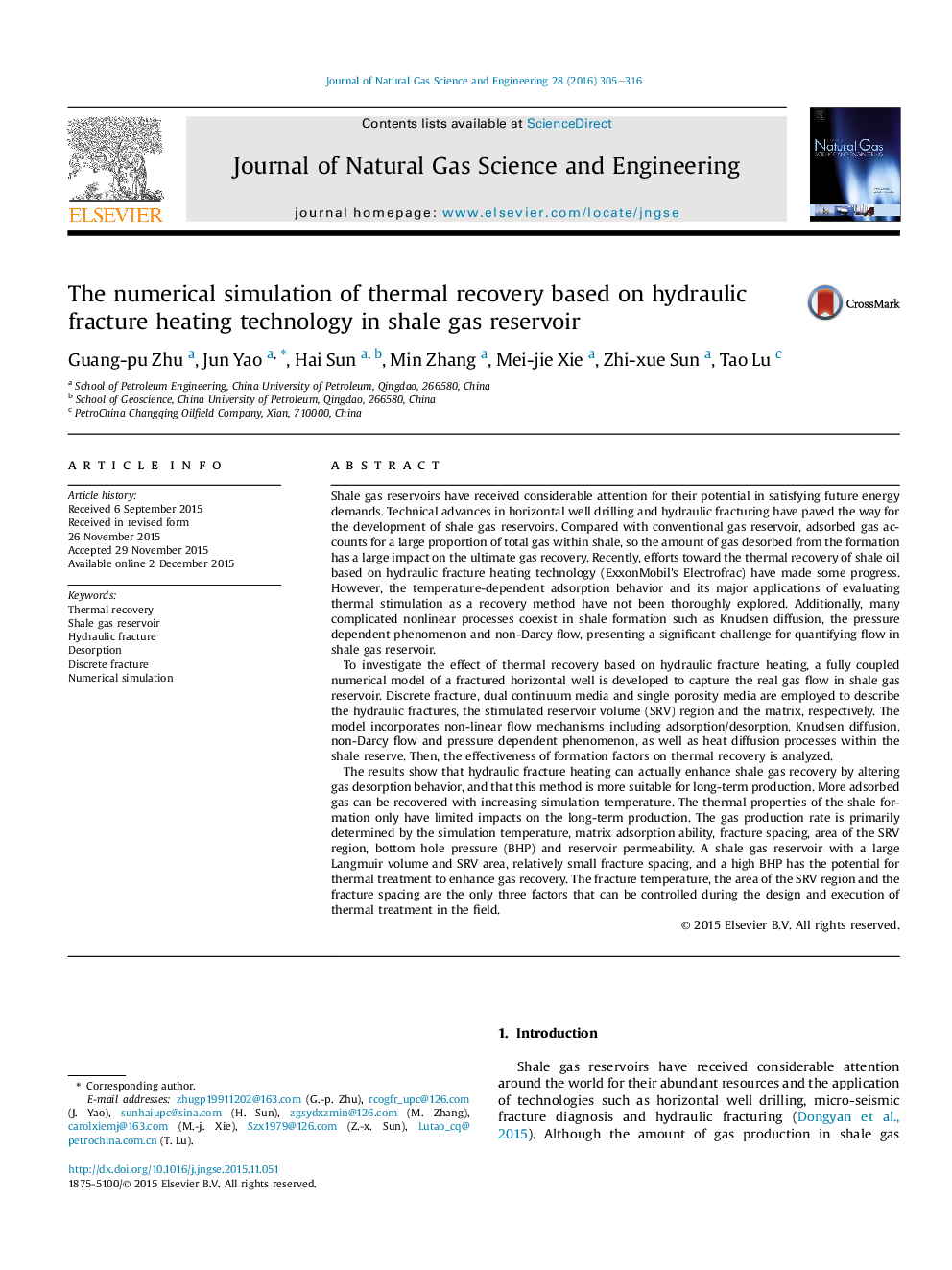| کد مقاله | کد نشریه | سال انتشار | مقاله انگلیسی | نسخه تمام متن |
|---|---|---|---|---|
| 1757290 | 1523013 | 2016 | 12 صفحه PDF | دانلود رایگان |
• A real gas-based model fully coupled gas flow and heat transfer in shale gas reservoir was developed.
• Many complicated nonlinear processes were incorporated into the model.
• Thermal recovery based on Electrofrac was introduced for shale gas reservoir.
• Heating the hydraulic fracture can actually enhance shale gas recovery.
• The effectiveness of formation factors on thermal recovery was investigated.
Shale gas reservoirs have received considerable attention for their potential in satisfying future energy demands. Technical advances in horizontal well drilling and hydraulic fracturing have paved the way for the development of shale gas reservoirs. Compared with conventional gas reservoir, adsorbed gas accounts for a large proportion of total gas within shale, so the amount of gas desorbed from the formation has a large impact on the ultimate gas recovery. Recently, efforts toward the thermal recovery of shale oil based on hydraulic fracture heating technology (ExxonMobil's Electrofrac) have made some progress. However, the temperature-dependent adsorption behavior and its major applications of evaluating thermal stimulation as a recovery method have not been thoroughly explored. Additionally, many complicated nonlinear processes coexist in shale formation such as Knudsen diffusion, the pressure dependent phenomenon and non-Darcy flow, presenting a significant challenge for quantifying flow in shale gas reservoir.To investigate the effect of thermal recovery based on hydraulic fracture heating, a fully coupled numerical model of a fractured horizontal well is developed to capture the real gas flow in shale gas reservoir. Discrete fracture, dual continuum media and single porosity media are employed to describe the hydraulic fractures, the stimulated reservoir volume (SRV) region and the matrix, respectively. The model incorporates non-linear flow mechanisms including adsorption/desorption, Knudsen diffusion, non-Darcy flow and pressure dependent phenomenon, as well as heat diffusion processes within the shale reserve. Then, the effectiveness of formation factors on thermal recovery is analyzed.The results show that hydraulic fracture heating can actually enhance shale gas recovery by altering gas desorption behavior, and that this method is more suitable for long-term production. More adsorbed gas can be recovered with increasing simulation temperature. The thermal properties of the shale formation only have limited impacts on the long-term production. The gas production rate is primarily determined by the simulation temperature, matrix adsorption ability, fracture spacing, area of the SRV region, bottom hole pressure (BHP) and reservoir permeability. A shale gas reservoir with a large Langmuir volume and SRV area, relatively small fracture spacing, and a high BHP has the potential for thermal treatment to enhance gas recovery. The fracture temperature, the area of the SRV region and the fracture spacing are the only three factors that can be controlled during the design and execution of thermal treatment in the field.
Journal: Journal of Natural Gas Science and Engineering - Volume 28, January 2016, Pages 305–316
